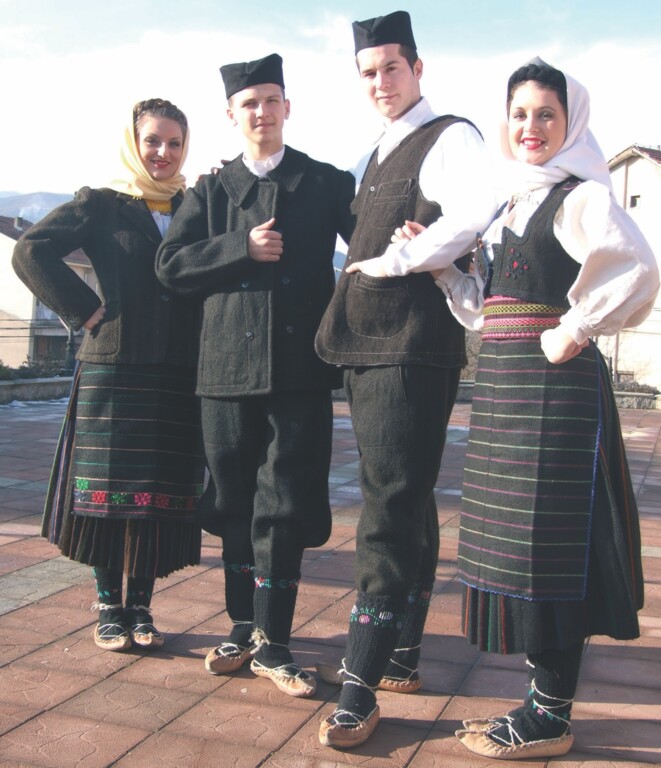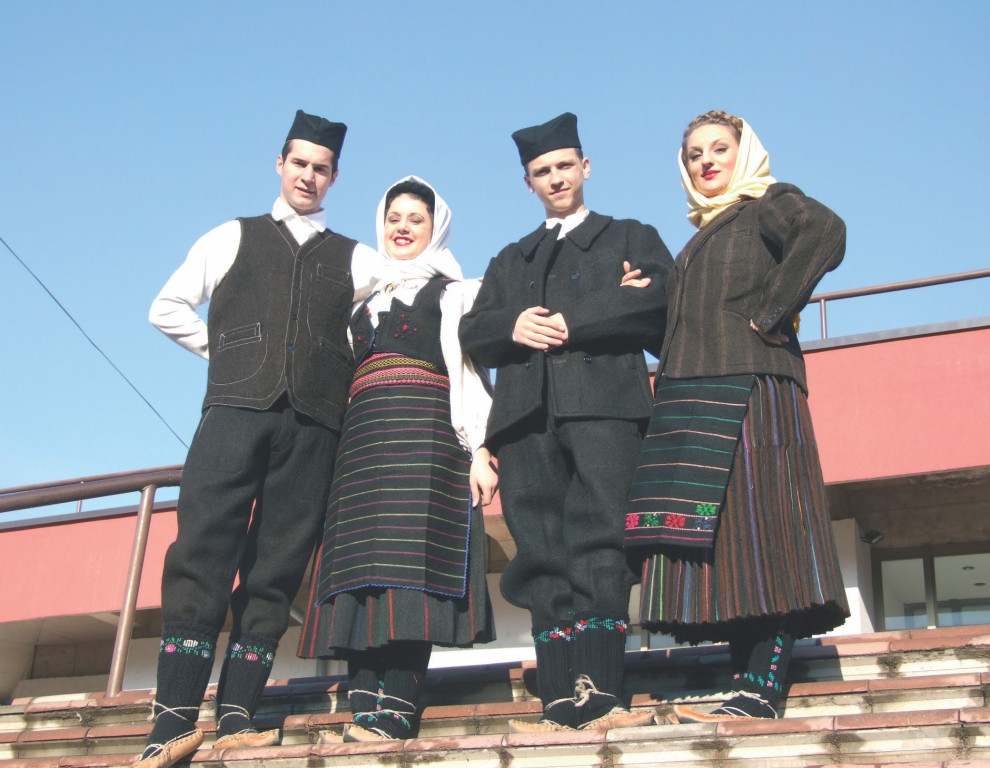Serbian clothing pattern in Leposavic, late 19th and first half of the 20th century
In the women's traditional dress in Leposavić and its surroundings until the 1970s, skirts were made of hemp, rough cloth: vrñacha, zaprega, prtena, lemeska, or woven from woolen yarn: nizaljke.
Together with aprons sanure in Zvečan and its surroundings, or with wrap-arounds, as well as without them, they were basic clothing items. The same skirts were worn in Blaževo and Postenje. They were sewn both pleated and tight. Woolen vests, bodices, and more richly embroidered waistcoats were also important parts of women's clothing in the second half of the 20th century. Shirts composed of cut parts like collars, chests, wedges, cuffs, and backs, made of hemp-cotton fabric, were an indispensable part of the clothing with multiple symbolic meanings. They were decorated with full embroidery around the sleeves and on the chest.

The first stores for purchasing manufactured materials appeared in Lešak, and even today people remember those who ran them: Vukoje, Uroš Jezdić, Jevto Stojanović, Sibin Banović. For larger purchases, one had to go to Raška, to the district as it was called, or to Novi Pazar in the Studenica district.
The emergence of ready-made factory goods in stores further accelerated the already rapid change in traditional clothing patterns and the introduction of new details in dressing. Thus, in 1969, Vidinka Kuzmanović married in a sewn skirt made of casha, stuffed, coffee-colored, sewn by her mother and in a purchased jumper, dark blue, made of wool. The material for the skirt and jumper was bought in Brus. Her blouse was also sewn by her mother, made of colorful cotton fabric, cicovina. She wore a white scarf on her head and thin synthetic socks on her feet.
Leather shoes, brown, were bought for her by the brother-in-law, following an old tradition, who was a policeman in Šabac. Her underwear was made of perlon, a slip and underwear. Her hair was combed into braids.

The need for men to move around, work, and earn for their families necessitated strong and relatively frequent changes in traditional male dress in Kosovo and Metohija.
The majority of the rural population did not significantly modernize their clothing until the Balkan Wars and the liberation of these areas from centuries-long Turkish rule. Extremely difficult living conditions, almost daily endangering the lives of Serbian, Orthodox people, led to the appearance of mimicry in clothing. Thus, until 1912, a white woolen suit was worn, recognized as the clothing of the Albanian male population, and after liberation, clothing was made of dark wool.
From the 1920s in men's traditional dress among Serbs, elements of the Serbian military uniform are noticeable, with šajkača hats on the head, and trousers on the bridge instead of čakšire of the old Balkan type.
After World War II, traditional male dress was completely replaced by ready-made clothing.

Traditional male dress is characterized by a shirt made of hemp, linen, cotton, or mixed fabric, straight-cut, widened with wedges on the side, knee-length, with wide long sleeves to which cuffs were added after World War I.
Over the shirt, a sleeveless waistcoat was worn, made of woolen or rough fabric in white, brown, or blue, and over it a long-sleeved koporan of the same material.
As an upper garment, a jamačan was worn on the overlap, with or without sleeves, waist-length, made of woolen fabric. In Ibarski Kolašin, coachmen and wealthy men also wore a long woolen overcoat of red, rarely white color, jopundža, made by tailors. It was semi-circular in shape with a hood, and the edges were decorated with black woolen braids.
Čakšire were tailored from white, sigav, or black wool, and by design, they could have a narrower or wider tur. After World War II, instead of wool, težina, a hemp fabric, was used.
In summer, tight-legged pants made of hemp fabric were worn close to the body. Socks were made of darker wool with discreet ornamentation. Over the socks, calf-length footless socks were worn, made of woolen fabric and decorated with black woolen braids, kalčine.
Traditional Serbian peasant shoes oputnjaci were made of untanned cowhide, and wealthier men wore leather shoes kondure on special occasions.
With the clothing, young men often wore a chain of beads of various colors, đinđuva or manistre, and the groom at the wedding would wear a groom's ring on his hand.
Jewelry and weapons were an integral part of the attire – in older times, a flintlock rifle, two pistols, and a yatagan, as well as metal cartridge cases, a powder flask, and a leather belt silav.
